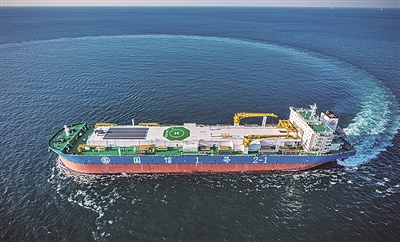SCODA's China-Europe Freight Train Operation Volume Reach Last Year's Total
发布时间:2024-10-13 信息来源:Qingdao Government
The number of China-Europe freight trains departing from the China-SCO Local Economic and Trade Cooperation Demonstration Area (SCODA) in Shandong has reached last year's total as of the morning of October 9. The 863rd train carrying goods such as auto parts and cooking oil left the area's multimodal transport hub, bound for Almaty in Kazakhstan via the Horgos border crossing. This milestone highlights a 16.6% year-on-year increase in the number of trains, with 843 trains operating in the first nine months of 2024 alone.
This year, the SCODA has been actively developing new routes and models for the China-Europe freight train service to better meet the transportation needs of businesses. A new route from Tongjiang, Heilongjiang, to Moscow has been launched to expand the service's coverage while effectively reducing overall logistics costs. Additionally, Shandong's first BX1K refrigerated train service has been introduced, ensuring the stability and safety of cold-chain transportation and providing logistics solutions for the province's fresh food import and export companies. Furthermore, the Caspian Sea freight route has been established as a regular service, cutting transit time by about one-third compared to traditional sea routes, which further reduces logistics costs and improves trade reliability.
The increasing proportion of return freight trains has been a key factor in the rapid growth of the China-Europe freight service in the SCO Demonstration Area. "We secured stable return cargo sources such as wheat bran and wheat from Kazakhstan this year," said a representative from the Qingdao branch of Shandong Hi-speed Qilu Eurasia Railway Logistics. Return trains accounted for 40% of total operations in the first nine months of 2024, achieving the goal of "full load both ways" for the China-Europe freight line.
The SCODA's role as a key logistics hub has established the China-Europe freight line as a vital "golden corridor" for international trade. The SCODA currently operates 32 regular domestic and international freight routes, connecting 54 cities across 23 countries involved in the SCO and the Belt and Road Initiative (BRI). It has pioneered over 10 specialized services, including two-way cold-chain transport and fresh vegetable shipments between China and Russia. To date, more than 4,000 China-Europe trains have been dispatched, establishing a comprehensive logistics network that links East Asia with Japan and South Korea, connects to Europe and Central Asia in the west, reaches Mongolia and Russia in the north, and extends south to ASEAN countries.
The SCODA has been steadily expanding its network of logistics hubs both domestically and internationally to build an efficient cross-border logistics and trade system; the Xinjiang branch of the SCODA is now ready for local operations while first overseas consolidation center for China-Europe freight trains has been established in Almaty, Kazakhstan. The former serves as a consolidation center for the Shandong-Xinjiang freight train service, a transit hub for China-Europe trains, and a key supply chain base for bulk commodities while the latter functions as an international matrix with eight additional overseas warehouses set up in strategic locations including Hamburg in Germany, Belgrade in Serbia, and Tashkent in Uzbekistan.
Zang Yuanqi, Director of the Industry Development Department of the SCODA's Administrative Committee, emphasized that the SCODA will continue to leverage its role as a public service platform to enhance the Shandong China-Europe freight line as an international brand. Efforts will focus on expanding the global transport network to increase its reach. The SCODA will also accelerate the construction of the SCO International Hub Port and push for the establishment of a free trade airport to optimize an integrated logistics service network that includes sea, land, air, and rail, thereby continuously strengthening the region's supply chain and industrial chain capabilities.



